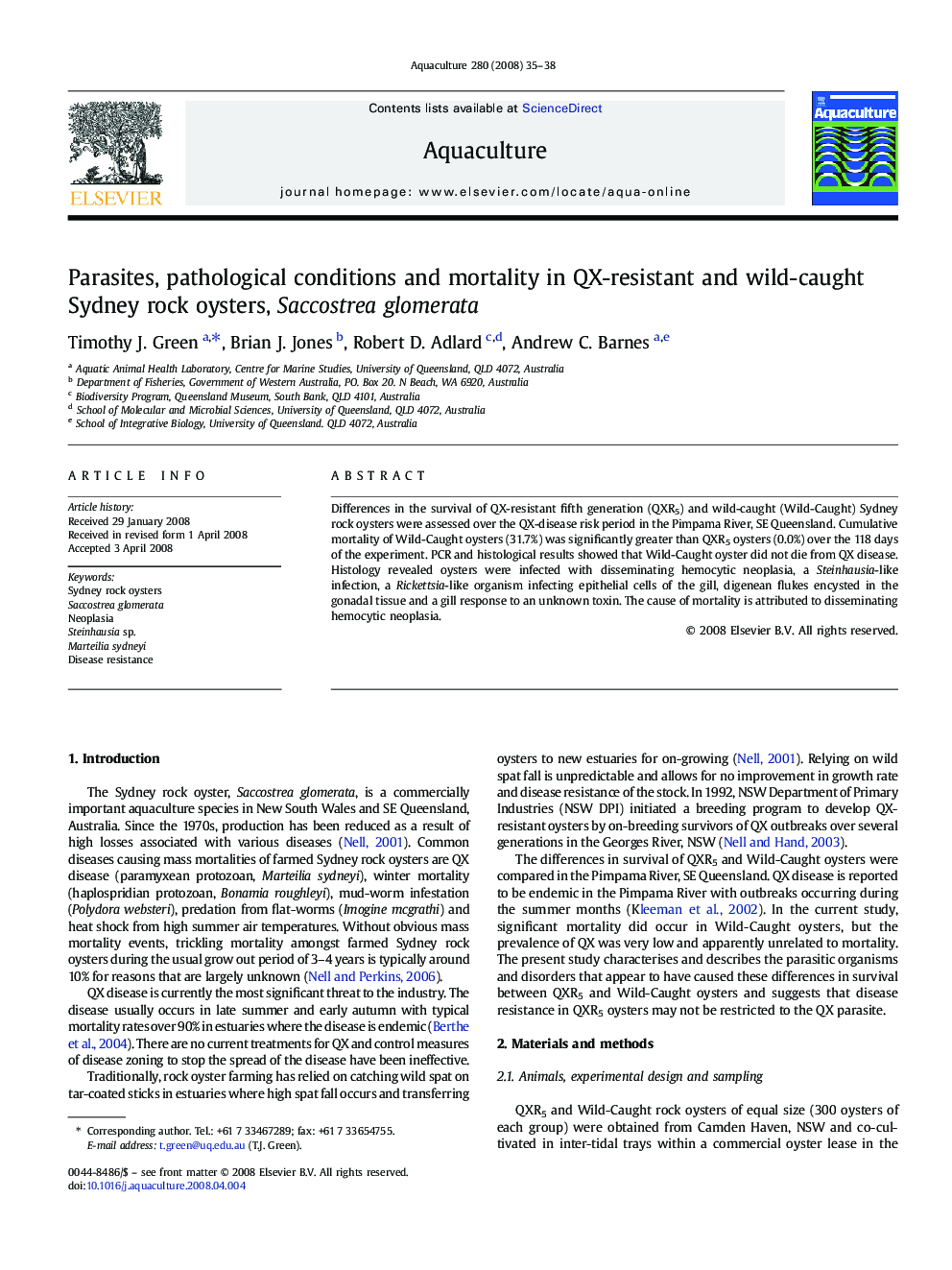| Article ID | Journal | Published Year | Pages | File Type |
|---|---|---|---|---|
| 8496209 | Aquaculture | 2008 | 4 Pages |
Abstract
Differences in the survival of QX-resistant fifth generation (QXR5) and wild-caught (Wild-Caught) Sydney rock oysters were assessed over the QX-disease risk period in the Pimpama River, SE Queensland. Cumulative mortality of Wild-Caught oysters (31.7%) was significantly greater than QXR5 oysters (0.0%) over the 118Â days of the experiment. PCR and histological results showed that Wild-Caught oyster did not die from QX disease. Histology revealed oysters were infected with disseminating hemocytic neoplasia, a Steinhausia-like infection, a Rickettsia-like organism infecting epithelial cells of the gill, digenean flukes encysted in the gonadal tissue and a gill response to an unknown toxin. The cause of mortality is attributed to disseminating hemocytic neoplasia.
Related Topics
Life Sciences
Agricultural and Biological Sciences
Aquatic Science
Authors
Timothy J. Green, Brian J. Jones, Robert D. Adlard, Andrew C. Barnes,
